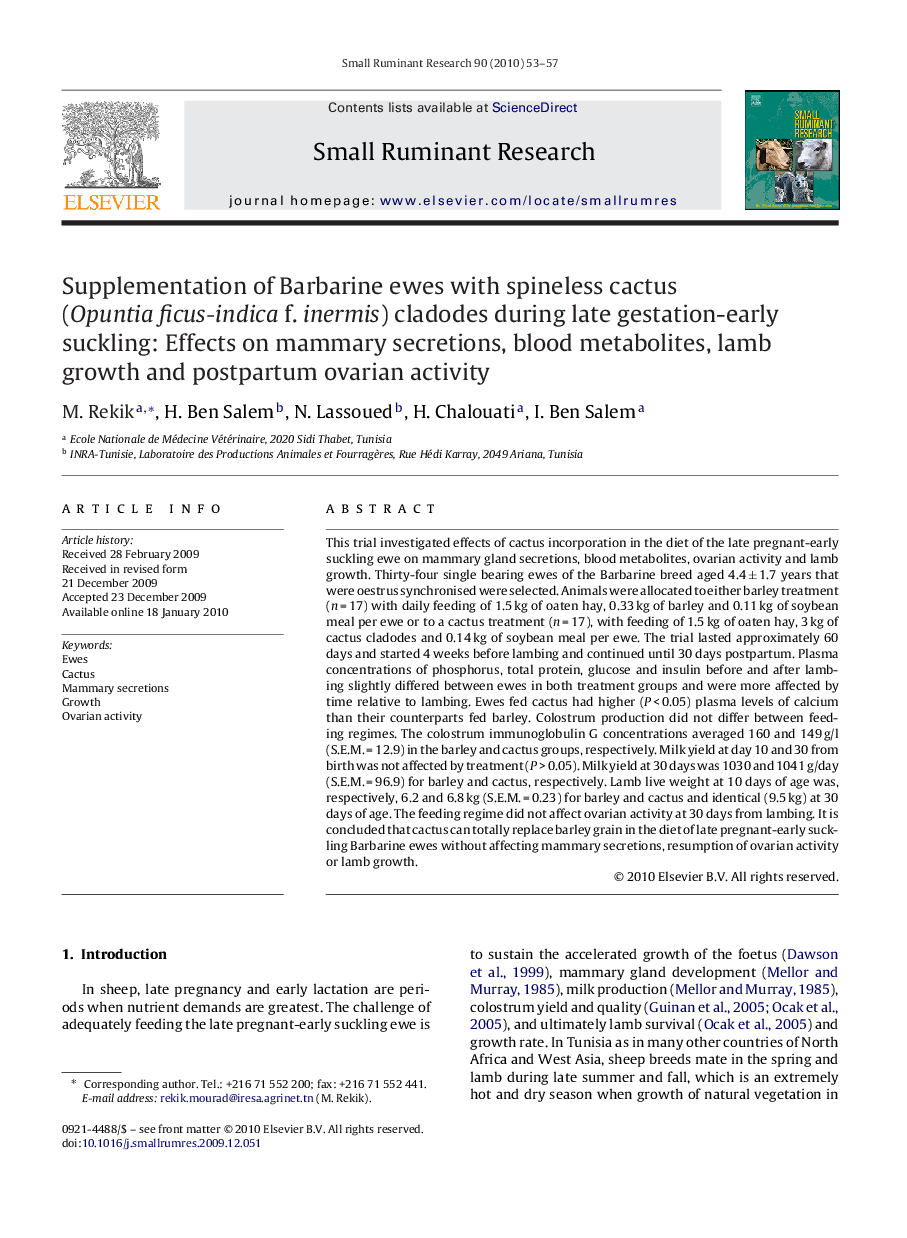| Article ID | Journal | Published Year | Pages | File Type |
|---|---|---|---|---|
| 2457493 | Small Ruminant Research | 2010 | 5 Pages |
This trial investigated effects of cactus incorporation in the diet of the late pregnant-early suckling ewe on mammary gland secretions, blood metabolites, ovarian activity and lamb growth. Thirty-four single bearing ewes of the Barbarine breed aged 4.4 ± 1.7 years that were oestrus synchronised were selected. Animals were allocated to either barley treatment (n = 17) with daily feeding of 1.5 kg of oaten hay, 0.33 kg of barley and 0.11 kg of soybean meal per ewe or to a cactus treatment (n = 17), with feeding of 1.5 kg of oaten hay, 3 kg of cactus cladodes and 0.14 kg of soybean meal per ewe. The trial lasted approximately 60 days and started 4 weeks before lambing and continued until 30 days postpartum. Plasma concentrations of phosphorus, total protein, glucose and insulin before and after lambing slightly differed between ewes in both treatment groups and were more affected by time relative to lambing. Ewes fed cactus had higher (P < 0.05) plasma levels of calcium than their counterparts fed barley. Colostrum production did not differ between feeding regimes. The colostrum immunoglobulin G concentrations averaged 160 and 149 g/l (S.E.M. = 12.9) in the barley and cactus groups, respectively. Milk yield at day 10 and 30 from birth was not affected by treatment (P > 0.05). Milk yield at 30 days was 1030 and 1041 g/day (S.E.M. = 96.9) for barley and cactus, respectively. Lamb live weight at 10 days of age was, respectively, 6.2 and 6.8 kg (S.E.M. = 0.23) for barley and cactus and identical (9.5 kg) at 30 days of age. The feeding regime did not affect ovarian activity at 30 days from lambing. It is concluded that cactus can totally replace barley grain in the diet of late pregnant-early suckling Barbarine ewes without affecting mammary secretions, resumption of ovarian activity or lamb growth.
